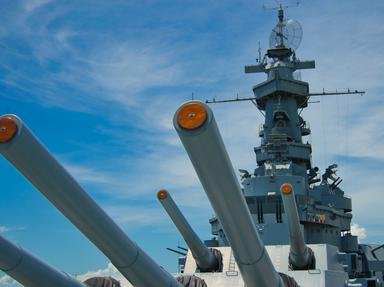Quiz Answer Key and Fun Facts
1. What type of submarine was the Wahoo?
2. Who was Wahoo's first commanding officer?
3. On December 31, 1942, Wahoo got a new commanding officer in the person of Dudley Walker Morton. What was Morton's nickname?
4. Who was Morton's most famous executive officer during his time on Wahoo?
5. As soon as he became the new skipper of Wahoo, Morton called the crew together and told them they were what?
6. Wahoo put to sea from Brisbane, Australia on her third war patrol on January 16, 1943. The first victim of her torpedoes under Morton was not a merchant vessel, but a Japanese warship. What type of ship did Wahoo sink on January 24, 1943?
7. On January 26, 1943 Wahoo found a Japanese convoy, and attacked, sinking three ships. What controversial action did Wahoo take during this encounter?
8. Only 11 days into her third patrol, Wahoo had expended all of her torpedoes, and had sunk three Japanese ships and heavily damaged two others. (Wahoo believed she had sunk all five). She headed for Pearl Harbor, where she would undergo repairs before going on patrol again. On January 27, Wahoo sighted yet another Japanese convoy of eight ships. Since she had no torpedoes left, what did Wahoo do?
9. When Wahoo returned to Pearl Harbor after her third war patrol, what was tied to her periscope as a symbol of her success?
10. As successful as her third patrol had been, it was Wahoo's fourth patrol that made her a legend of the Pacific Fleet. How many Japanese ships did Wahoo sink on her fourth war patrol?
11. The Wahoo's fifth war patrol was conducted where?
12. Wahoo had been used hard and suffered a lot of damage. She was ordered to report to the Mare Island Navy Yard for a complete overhaul. She arrived to a hero's welcome on May 29, but Morton did something that caused a bit of a scandal. What was it?
13. While Wahoo was undergoing overhaul at Mare Island, Mush Morton served as a technical advisor on a movie. Which one?
14. Morton and his crew were eager to get Wahoo back in action. But her sixth war patrol proved to be a major disappointment. Why?
15. Wahoo left Pearl Harbor on September 9, 1943 on her seventh patrol - one from which she never returned. How did Wahoo meet her end?
Source: Author
daver852
This quiz was reviewed by FunTrivia editor
bloomsby before going online.
Any errors found in FunTrivia content are routinely corrected through our feedback system.
